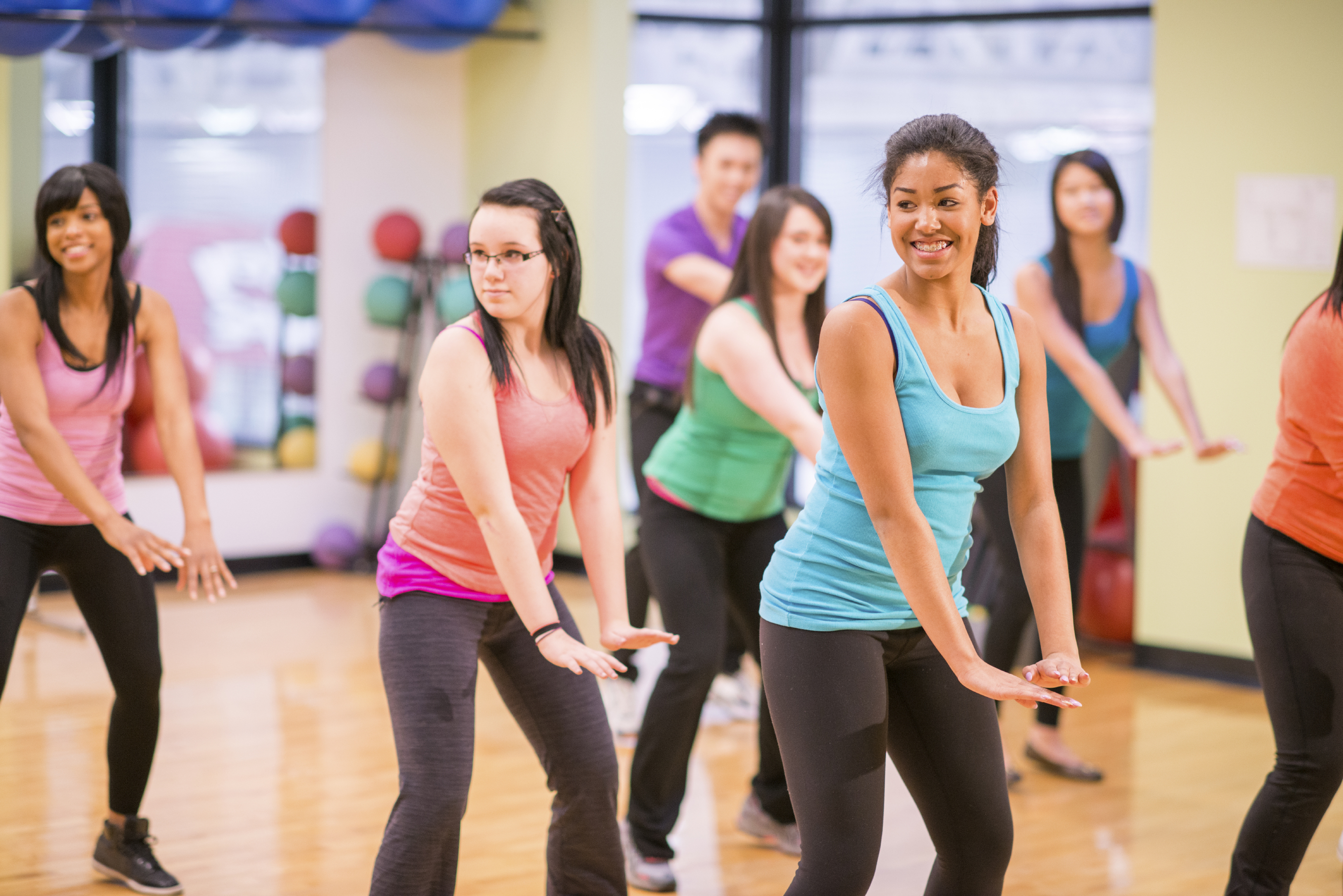
Background
Sport England’s Youth Insights Pack highlights that in order to change the behaviour of inactive young people and increase their participation levels we need to understand their attitude to sport.
Penny Woods, the Strategic Lead – Programmes at Energise Me (formerly Sport Hampshire & IOW) was therefore keen to learn more about 13-15 year olds, their attitudes to sport and how to engage them.
She hired us to run a research and consultation study to provide a real-life insight into the relationship that young people aged 13 to 15 years have with sport and physical activity, particularly those who are overweight and obese, by examining their attitudes, perceptions, behaviours, interests and motivations.
Objectives
Generate a strong evidence base that will drive the development of appropriate interventions to inspire this target audience to make positive decisions and to take positive action leading them to be more physically active on a regular and sustained basis.
Gain an in-depth understanding of the below outlined areas and identify any significant variances linked to factors such as age, gender, weight, location, etc:
- Attitudes to and perceptions of sport and physical activity
- Current participation levels and profile of participation – what they do currently, how often do they like to do it, with whom, etc.
- Interests and motivations and how inactive members of this audience could be encouraged to change their current pattern of participation. Are they receptive or resistant to change? What are major barriers to change that may need to be overcome?
- Suitability of existing provision of sport and physical activity by assessing the extent to which it matches identified interests and needs and testing the effectiveness of the messages and channels being used for advertising and marketing. With the current offer being varied and comprehensive the failure to engage this market effectively means there is a disconnect that needs to be identified and addressed.
Run a pilot study to apply the findings of this initial research work. It is important to test how the tailoring of interventions and/or communications translates into positive action and to undertake follow up consultation with those who do not increase their levels of participation to find out what further steps and refinements are required.
Research project
What we did
We analysed 23 existing research reports and wrote marketing plans for girls and boys aged 13 to 15 and 16 to 18.
What we learnt
We’ve learnt how weight and activity levels affect their perceptions towards physical activity; their motivations and barriers; what messages and communication channels to use; participation levels and activities they like.
To read the full reports download them here:
Pilot campaign
What we did
Based on the insight we had developed in the first stage of the project we devised a pilot campaign. The objective of this was to test how to apply those insights in the real world.
- We contacted activity providers and built an activity database of activities suitable for 13 to 15 year olds and who would offer a first session for free.
- We set up landing pages and Facebook ads to promote the free activity voucher.
- We set up an automated email follow up to support people in getting and staying active long term.
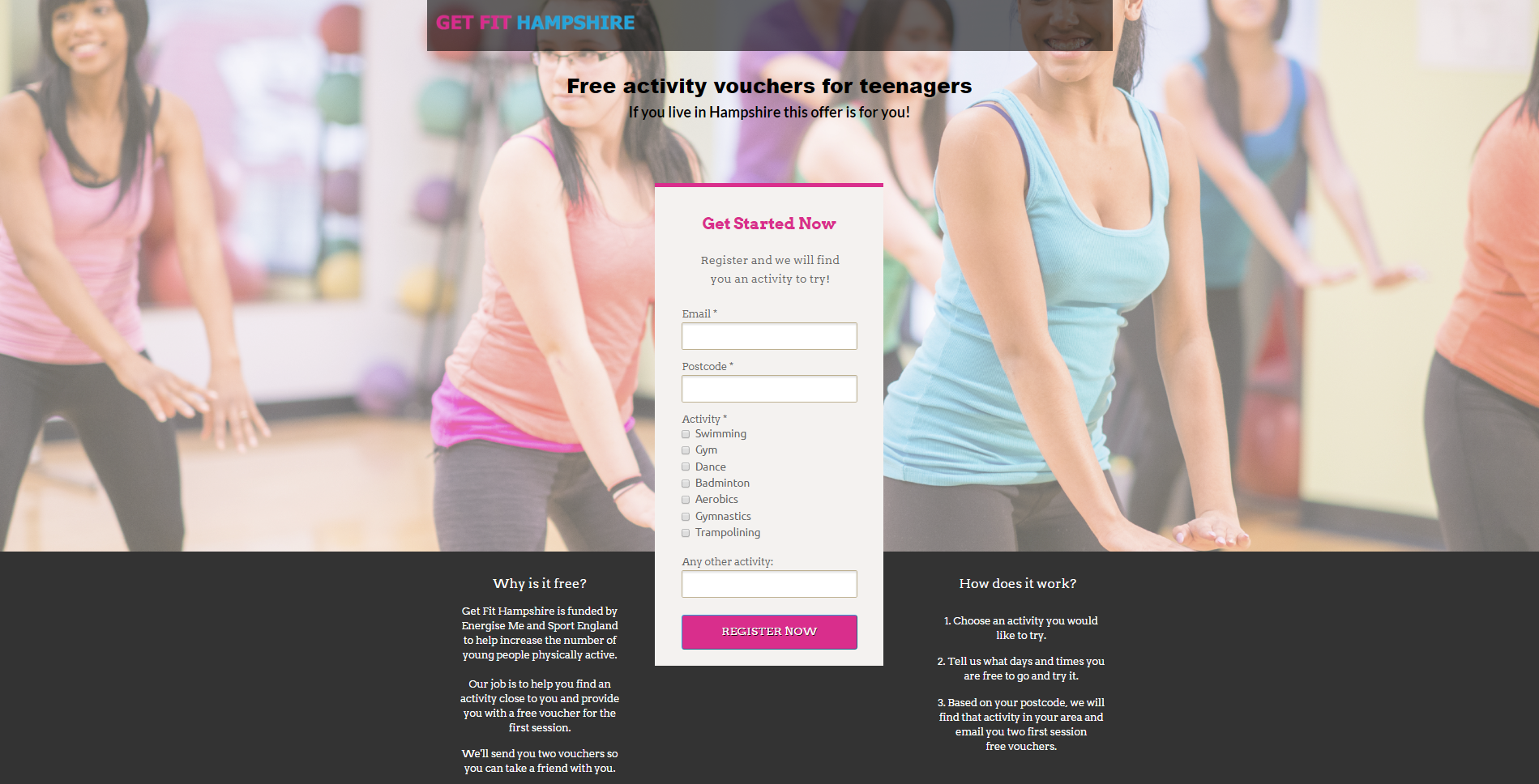
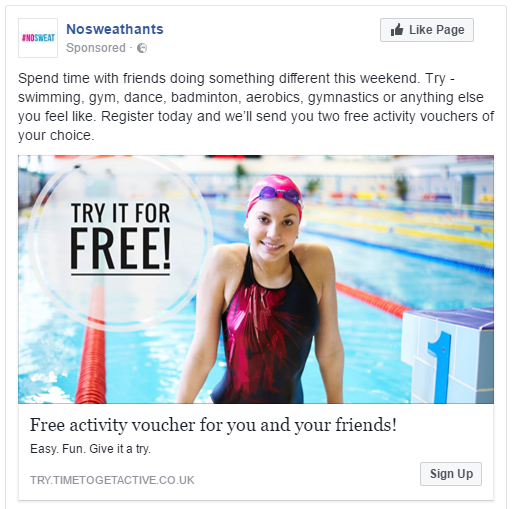
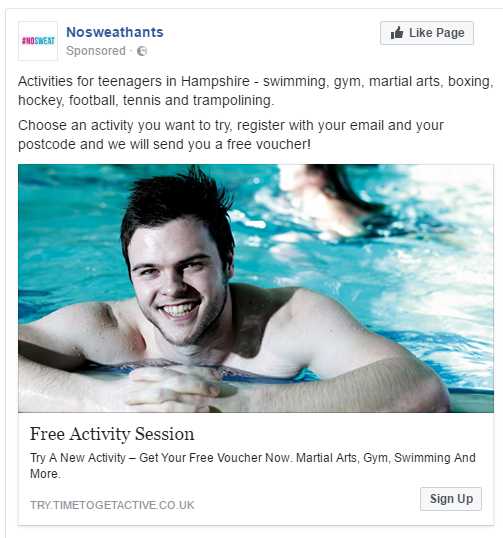
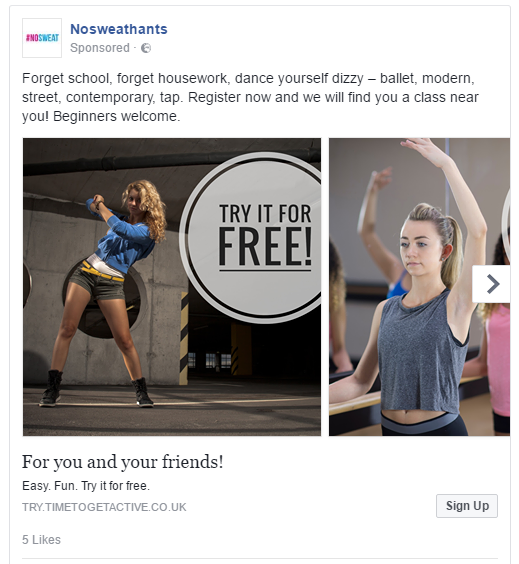
Results
Key results included:
- We engaged over 100 13-15 year olds and linked them with a local activity.
- 20% were completely inactive and another 60% were insufficiently active when they registered.
- 80% were girls.
We also learnt a huge amount about how to apply the insights from the research in a real-life campaign.
What we learnt
- Finding activities suitable for under 16s proved to be a challenge. The majority of activity providers didn’t feel they were adequately insured and didn’t want to take any risks.
- We tested 15 different images for each gender. The images that performed best showed smiling, good looking people of their own age having fun. Images that showed ‘real’ people exercising and getting sweaty and red faced didn’t do well.
- We learned that we shouldn’t mention age range e.g. 13 to 16, say teenagers instead. At that age 12 months makes a huge difference, so a 13-year-old thinks they are very different from a 14-year-old.
- ‘Free activity session’ as a headline worked best in Facebook ads.
- We should mention the most popular activities available in the text.
- Focus on benefits for this age group.
- Mention getting active with a friend.
- Most popular activities for girls were:
- swimming
- gym
- fitness
- dance
- badminton
- gymnastics
- trampolining
- aerobics
- yoga
- basketball
- The most popular sports for boys were:
- football
- gym
- swimming
- martial arts
- fitness
- boxing
- trampolining
- cycling
- tennis
- basketball.
Facebook Ad webinar
If you’re interested in learning more about how to use Facebook Ads to engage inactive people from hard-to-reach groups then you can sign up for our free webinar. In it we’ll cover these steps in more detail and give you a step-by-step guide to setting your ads up.
